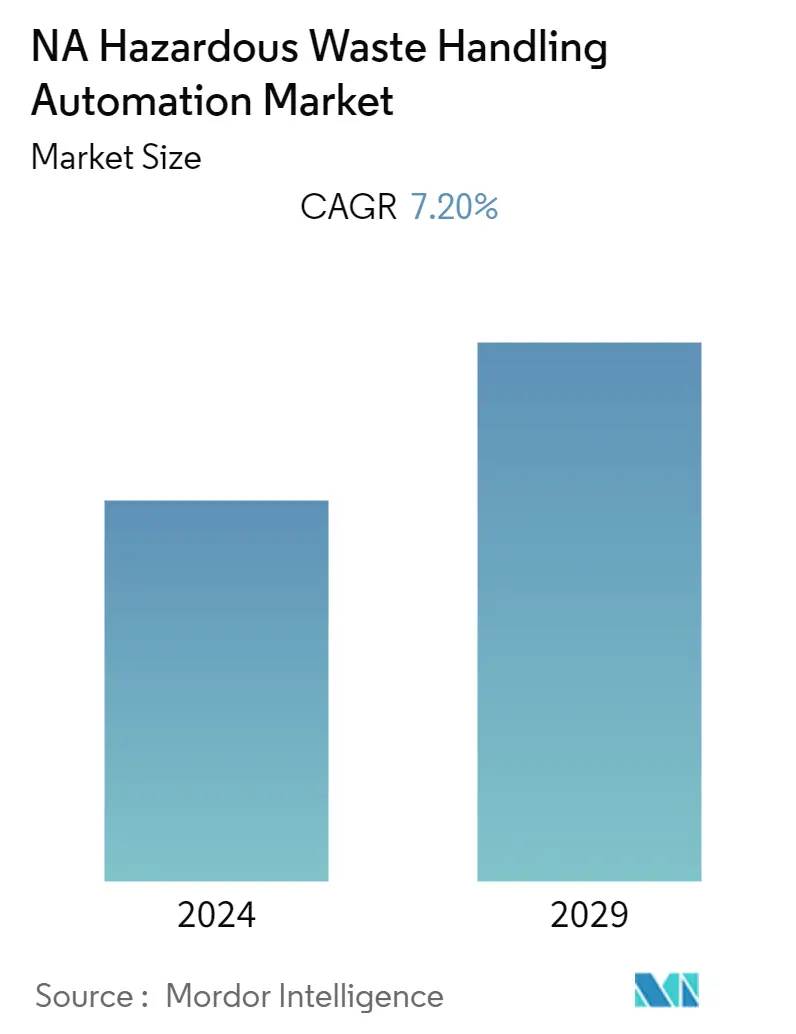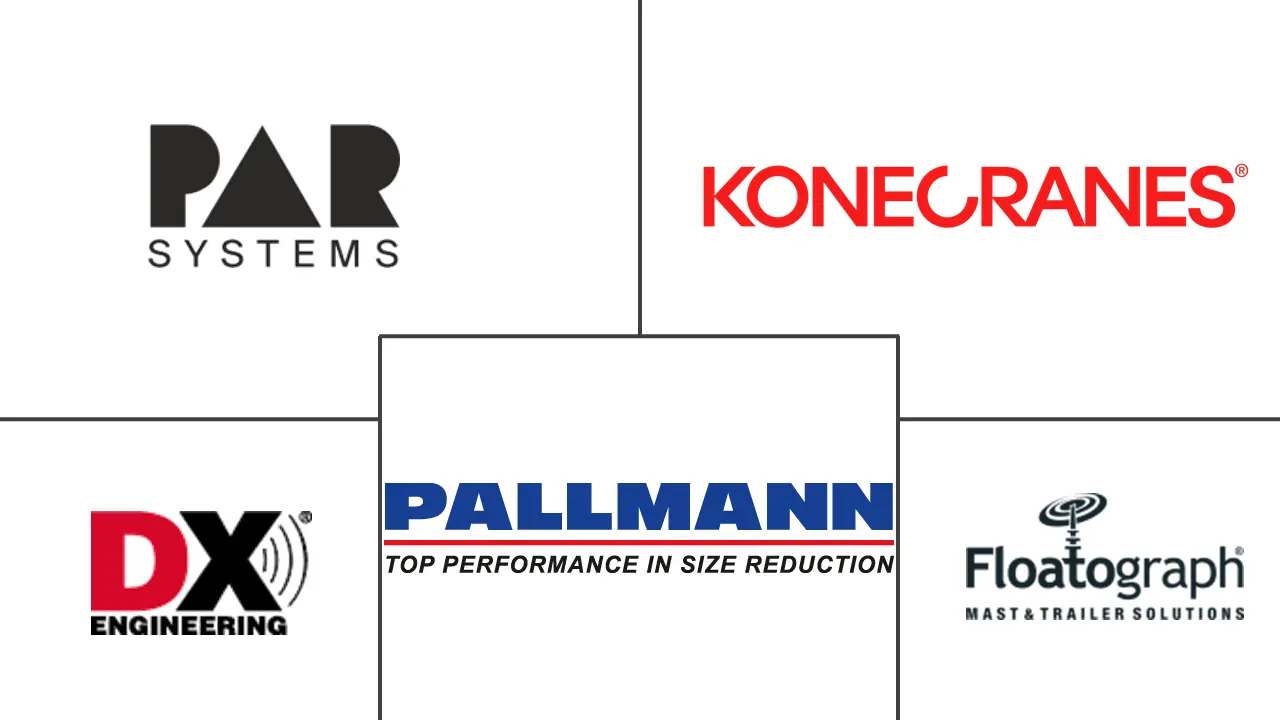Market Size of NA Hazardous Waste Handling Automation Industry

| Study Period | 2019 - 2029 |
| Base Year For Estimation | 2023 |
| Forecast Data Period | 2024 - 2029 |
| Historical Data Period | 2019 - 2022 |
| CAGR | 7.20 % |
| Market Concentration | Medium |
Major Players
*Disclaimer: Major Players sorted in no particular order |
Need a report that reflects how COVID-19 has impacted this market and its growth?
North America Hazardous Waste Handling Automation Market Analysis
The North American hazardous waste handling automation market is expected to grow, registering a CAGR of 7.2% during the forecast period. The market is fueled by increased industrial activity, a rise in production and manufacturing-related waste, and government and industry regulations on managing hazardous waste.
- Automating hazardous waste handling is the method of handling hazardous waste with machines. This can range from classifying and moving the material to actually destroying it. Automation of hazardous waste handling is growing in popularity as businesses explore for solutions to lessen their environmental effect.
- The North American hazardous waste handling automation market is likely to grow significantly over the forecast period as a result of severe governmental and industrial laws designed to keep people safe from hazardous waste in light of the harm caused to people and the environment.
- Because of the rising adoption of automation in the waste management process, the United States is predicted to dominate the North American hazardous waste handling automation market during the forecast period. The region's most recent technology innovations and adoptions have aided in developing dangerous new waste-handling automation products that can improve overall operations and accuracy in several applications.
- Although the American public views hazardous waste as a severe environmental problem, the social and environmental issues brought on by its high development and buildup rates have not received considerable consideration. Because of this, organizations like the EPA have worked to create hazardous waste rules that strike a balance between resource conservation and maintaining the protection of human health and the environment. While particular dangerous wastes can be processed and disposed of in landfills or incinerators, other wastes must be treated and recycled safely and effectively.
- According to the US Energy Information Administration, around 85 pounds of MSW can be burned as fuel to produce energy for every 100 pounds of MSW in the US as of December 2022. Trash-to-energy facilities reduce waste volume by roughly 87% and turn 2,000 pounds of garbage into ash that weighs between 300 and 600 pounds. A massive crane claw gathers rubbish and deposits it in a combustion chamber while generating power in a mass-burn waste-to-energy plant.
- Decomposing or neutralizing hazardous waste has also become difficult due to the need to create new technologies for hazardous waste management. Businesses in the hazardous waste management industry are constantly trying to develop innovations and solutions to problems.
- Furthermore, several non-government organizations (NGOs) and community-based organizations (CBOs) are stepping in to help hospitals and other healthcare facilities collect, recycle, and dispose of medical waste. Such initiatives are expected to boost further the adoption of automation solutions for waste management.
- An exclusive partnership was formed between environmental solutions provider US Ecology and machine learning technology company Smarter Sorting to provide retailers with an automated solution to more safely and compliantly classify and segregate RCRA, hazardous and non-hazardous waste. The exclusive partnership between US Ecology and Smarter Sorting was the first collaboration to incorporate artificial intelligence into the supply chain of retail products classified as waste.
- Several government organizations, such as the Food and Drug Administration (FDA), Environment Protection Agency (EPA), and Drug Enforcement Administration (DEA), are also consistently working toward the proper management of waste to ensure safety from hazardous medical, chemical, and radioactive wastes.
